Country
Crash of a Convair RB-36H-25-CF Peacemaker in Denver
Date & Time:
Nov 15, 1956
Registration:
51-13720
Survivors:
Yes
Schedule:
Lowry - Ellsworth
Crew on board:
4
Crew fatalities:
Pax on board:
17
Pax fatalities:
Other fatalities:
Total fatalities:
0
Circumstances:
Shortly after takeoff from Lowry AFB, while climbing, the aircraft suffered a loss of power on all engines. The captain decided to divert to the nearest Airport, Denver-Stapleton. On final, the airplane stalled and crashed in flames one mile short of runway 17 threshold. All 21 occupants escaped while the aircraft was destroyed by a post crash fire.
Probable cause:
Loss of engine power caused by a fuel starvation.
Crash of a Convair B-36B-5-CF Peacemaker at Biggs AFB
Date & Time:
Jan 19, 1956
Registration:
44-92041
Survivors:
Yes
Schedule:
Biggs - Biggs
MSN:
38
YOM:
1946
Crew on board:
0
Crew fatalities:
Pax on board:
0
Pax fatalities:
Other fatalities:
Total fatalities:
0
Circumstances:
Considered as damaged beyond repair following a hard landing at Biggs AFB. No injuries.
Crash of a Convair RB-36H-60-CF Peacemaker at Ellsworth AFB
Date & Time:
Jan 4, 1956
Registration:
52-1387
Survivors:
Yes
Schedule:
Ellsworth - Ellsworth
MSN:
339
YOM:
1952
Crew on board:
0
Crew fatalities:
Pax on board:
0
Pax fatalities:
Other fatalities:
Total fatalities:
0
Circumstances:
The crew was completing a local training mission at Ellsworth AFB. On touchdown, the six engine airplane went out of control, veered off runway and came to rest in flames. All occupants escaped uninjured while the aircraft was destroyed by fire. It is believed that the loss of control was caused by an uneven power reduction during landing.
Crash of a Convair B-36J-5-CF Peacemaker near Sterling City: 15 killed
Date & Time:
May 25, 1955 at 2305 LT
Registration:
52-2818
Survivors:
No
Schedule:
Walker - Walker
MSN:
374
YOM:
1952
Flight number:
Abbott 27
Crew on board:
15
Crew fatalities:
Pax on board:
0
Pax fatalities:
Other fatalities:
Total fatalities:
15
Circumstances:
While conducting a training mission from Walker AFB, the crew encountered poor weather conditions with thunderstorm activity and turbulences. The airplane lost wing panels, went out of control and crashed in a flat attitude in a desert area located 18,5 miles southwest of Sterling City. All 15 crew members were killed.
Probable cause:
Loss of control caused by heavy turbulences in thunderstorm activity.
Crash of a Convair B-36B-1-CF Peacemaker at Loring AFB
Date & Time:
Mar 5, 1955
Registration:
44-92030
Survivors:
Yes
Schedule:
Loring - Loring
MSN:
27
YOM:
1946
Crew on board:
11
Crew fatalities:
Pax on board:
0
Pax fatalities:
Other fatalities:
Total fatalities:
0
Circumstances:
The crew was completing a local training mission at Loring AFB. Upon landing, the aircraft hit a snow bank with its wing tip, went out of control and came to rest in flames. All 11 occupants were rescued, some of them were injured. The aircraft was destroyed.
Crash of a Convair B-36B-1-CF Peacemaker at Carswell AFB
Date & Time:
Feb 8, 1955
Registration:
44-92029
Survivors:
Yes
Schedule:
Biggs - Carswell
MSN:
26
YOM:
1946
Crew on board:
0
Crew fatalities:
Pax on board:
0
Pax fatalities:
Other fatalities:
Total fatalities:
0
Circumstances:
Following an uneventful training flight from Biggs AAF, the pilot-in-command started the approach to Carswell AFB but was too low. On short final, the airplane hit the ground, lost its undercarriage and came to rest. There were no casualties but the aircraft was written off.
Probable cause:
Too low approach on part of the pilot-in-command.
Crash of a Convair B-36D-1-CF Peacemaker at Biggs AAF: 1 killed
Date & Time:
Aug 28, 1954
Registration:
44-92097
Survivors:
Yes
Schedule:
Biggs - Biggs
MSN:
92
YOM:
1946
Crew on board:
0
Crew fatalities:
Pax on board:
0
Pax fatalities:
Other fatalities:
Total fatalities:
1
Circumstances:
The crew was completing approaches and landings at Biggs AAF, El Paso, Texas. On final approach by night, the engine lost power. The airplane lost height and crashed 1,300 feet short of runway threshold and came to rest in flames. A crew member was killed.
Probable cause:
Engine loss of power on final approach.
Crash of a Convair RB-36H-25-CF Peacemaker at Ellsworth AFB: 26 killed
Date & Time:
Aug 27, 1954 at 2211 LT
Registration:
51-13722
Survivors:
Yes
Schedule:
Ellsworth - Ellsworth
Crew on board:
4
Crew fatalities:
Pax on board:
23
Pax fatalities:
Other fatalities:
Total fatalities:
26
Circumstances:
Aircraft Commander Lt Col Wray Cotterill, Pilot 1st Lt Roger Bumps, Co-pilot Captain Neal Williams and a crew of twenty-four took off in RB-36H, 51-13722 of the 77th Strategic Reconnaissance Squadron of the 28th Strategic Reconnaissance Wing from Ellsworth AFB at 4:15 in the morning on August 27, 1954. The crew had just returned from a thirty day leave. Captain Williams had finished a 20-hour mission just 32 hours earlier. Their flight took them to Kansas City, Missouri; Little Rock, Arkansas; Dallas, Texas; and back to Little Rock for radar bombing practice. They flew to Kansas City again and then returned to Ellsworth AFB after flying 3,594 air miles. At 9:00 in the evening the pilots began to practice Planned Position Indicator Ground Control Approaches (GCA PPI) using Air Surveillance Radar. They entered the pattern for Runway 12. GCA PPI was not as precise as GCA precision approach. The minimum altitude for GCA approach was 3,864 feet. The approaches were flown at 145 miles per hour. The landing gear remained retracted. The flaps were lowered to 20 degrees and the landing lights were extended. The night was clear and visibility exceeded 15 miles. During the first four approaches, Lt Bumps flew from the right seat and Captain Williams observed from the left seat. A pair of North American F-86D Sabre Dogs took off from Runway 30 at 9:30. Their pilots noticed that the red obstruction lights on a low range of hills 1-3/4 miles northwest of the runway were not working. The lead pilot notified the Ellsworth tower that the obstruction lights were out. It was not known at the time that they had been disabled by a lightning strike the night before. The civilian Senior Electrician of Air Installations was called shortly before 10:00 P.M. and notified that the obstruction lights needed to be repaired. He assembled a crew at the AIO electrical shop and prepared to drive out to the lights. On the fourth approach, ground control advised Lt Bumps that the obstruction lights northwest of the field were not working. After the fourth pass over the airfield, Col Cotterill moved into the left hand seat to fly the next approach. Col Cotterill flew the approach higher than the glide path specified by the GCA operator. Before the sixth approach, Captain Williams replaced Lt Bumps in the right hand seat. It is believed that Col Cotterill flew the next approach. The RB-36H was flying at 145 miles per hour on a heading of 147 degrees (true), descending at 750 feet per minute when the left wing struck one of the inoperative obstruction lights. Seventy feet beyond the obstruction light the lower fuselage struck the ground 8,777 feet short and 225 feet right of the centerline of Runway 12 at 10:11 P.M. Mountain Standard Time. The impact point was at an elevation of 3,394 feet, 148 feet higher than the runway. The tail section broke away from the fuselage and came to rest 275 feet from the first point of impact. E.C.M. Captain Philip Toups, 1st Lt Roger Bumps and E.C.M. A/1C John Harvey were rescued from the wreckage while 24 other occupants were killed. Cpt Toups died five days after the crash. A/1C Harvey succumbed to his injuries after six days. Eventually, only 1st Lt Roger Bumps survived the crash.
Crew:
Lt Col Wray Cotterill, pilot,
Cpt Neal Williams, copilot,
1st Lt Roger Bumps, copilot,
Maj Martin Margolin, navigator.
Passengers:
Maj Harold Chambers, photo navigator,
Cpt James MacDaniel, radar navigator,
Cpt Roy Wegner, engineer,
M/Sgt William Ratagick, engineer,
A1c Glenn Kerri, ECM,
T/Sgt Charles Briggs, ECM
Cpt Philip Toups, ECM,
A1c John Harvey, ECM,
M/Sgt Carl Boyd, radio operator,
A1c James Swanson, radio operator,
A1c Russell Wilson, photo,
A2c Allen Jenkins, photo,
M/Sgt Dean McKever, gunner,
A1c John Baker, gunner,
A1c George Gross, gunner,
S/Sgt Dennis Murphy, gunner,
A2c George Hertnecky, gunner,
A2c William Lynch, radio operator,
2nd Lt Richard Crittenden, navigator,
2nd Lt Joseph Mullan, engineer,
A2c Marcel Herbert, photo,
A2c Billy Campbell, photo,
A2c Donald Wolf, gunner.
Source & photos: http://www.air-and-space.com
Crew:
Lt Col Wray Cotterill, pilot,
Cpt Neal Williams, copilot,
1st Lt Roger Bumps, copilot,
Maj Martin Margolin, navigator.
Passengers:
Maj Harold Chambers, photo navigator,
Cpt James MacDaniel, radar navigator,
Cpt Roy Wegner, engineer,
M/Sgt William Ratagick, engineer,
A1c Glenn Kerri, ECM,
T/Sgt Charles Briggs, ECM
Cpt Philip Toups, ECM,
A1c John Harvey, ECM,
M/Sgt Carl Boyd, radio operator,
A1c James Swanson, radio operator,
A1c Russell Wilson, photo,
A2c Allen Jenkins, photo,
M/Sgt Dean McKever, gunner,
A1c John Baker, gunner,
A1c George Gross, gunner,
S/Sgt Dennis Murphy, gunner,
A2c George Hertnecky, gunner,
A2c William Lynch, radio operator,
2nd Lt Richard Crittenden, navigator,
2nd Lt Joseph Mullan, engineer,
A2c Marcel Herbert, photo,
A2c Billy Campbell, photo,
A2c Donald Wolf, gunner.
Source & photos: http://www.air-and-space.com
Probable cause:
Several factors contributed to the crash. The altimeter error for the RB-36H was estimated at -160 feet to 270 feet. An additional local terrain effect introduced an additional error of -70 feet to 70 feet. The Rapid City GCA radar was miscalibrated. The range value shown on the radar at the point of impact was off by 1/2 mile. Since the GCA radar indicated that the airplane was 1/2 mile closer than it actually was, it placed the glide slope 150 feet low. In the months preceding and following the crash, at least six pilots reported that GCA instructions might have caused them to land short or that GCA had reported them over the end of the runway before they actually reached it.
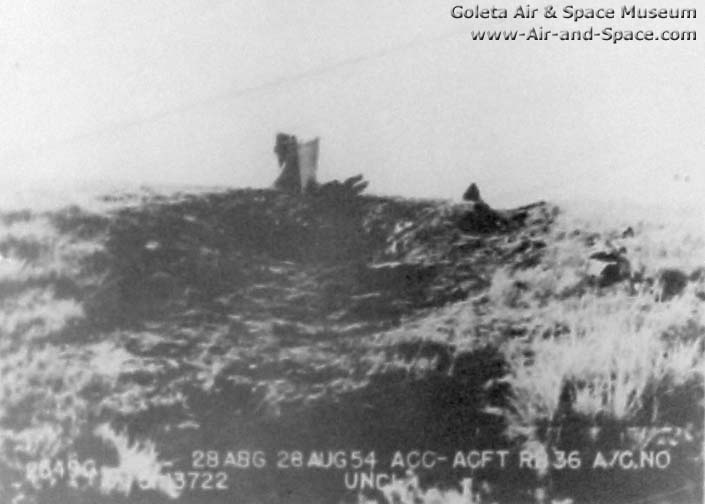
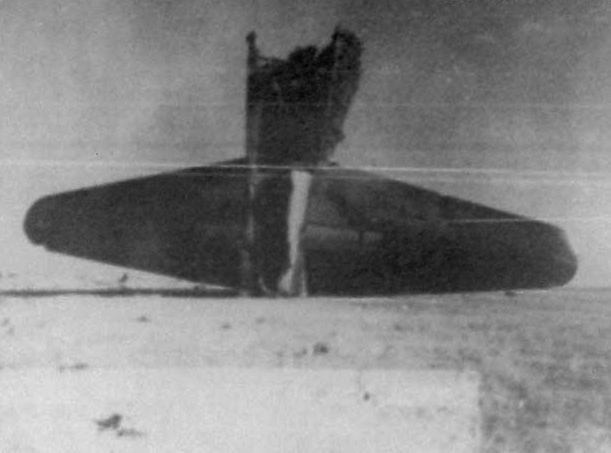
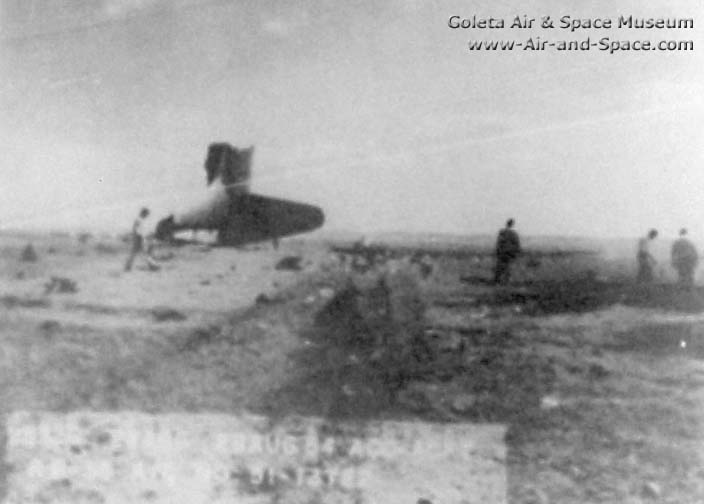
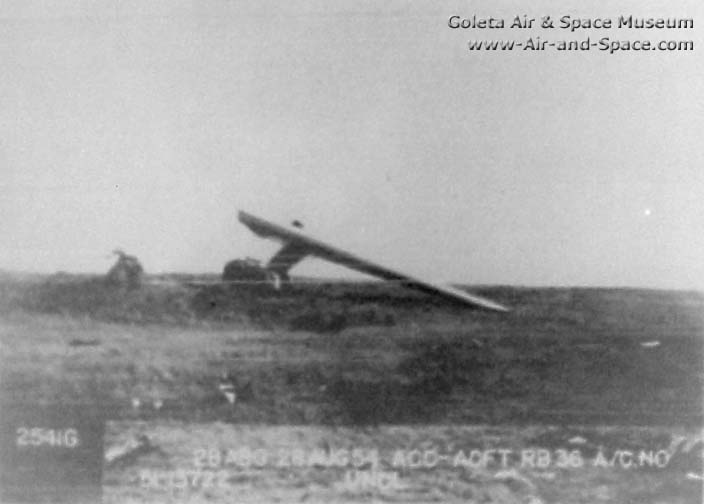
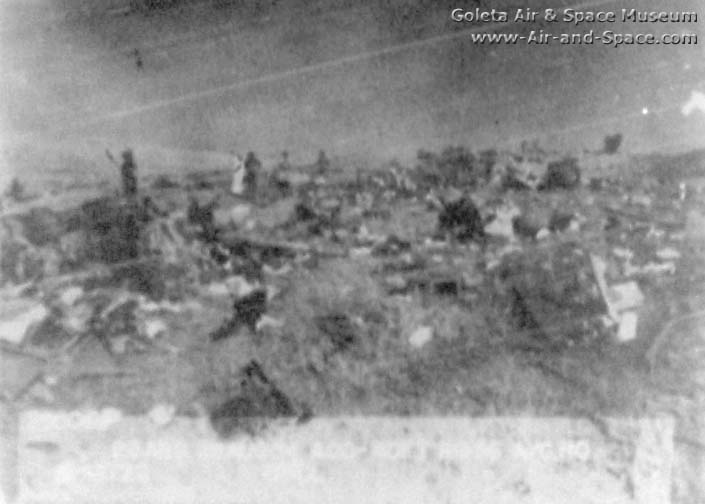
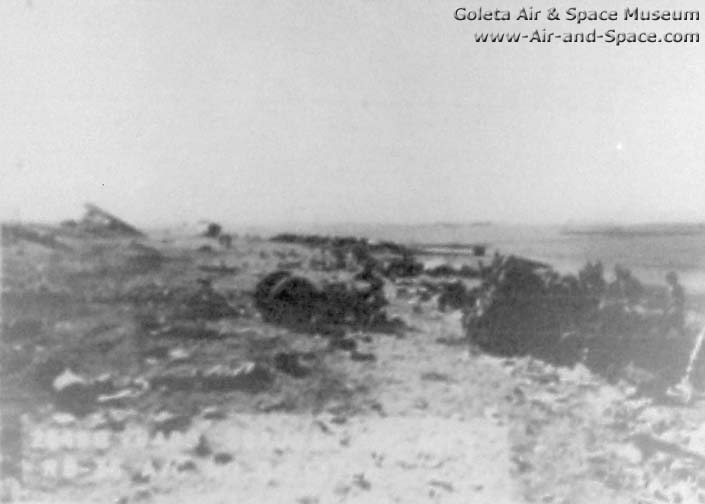
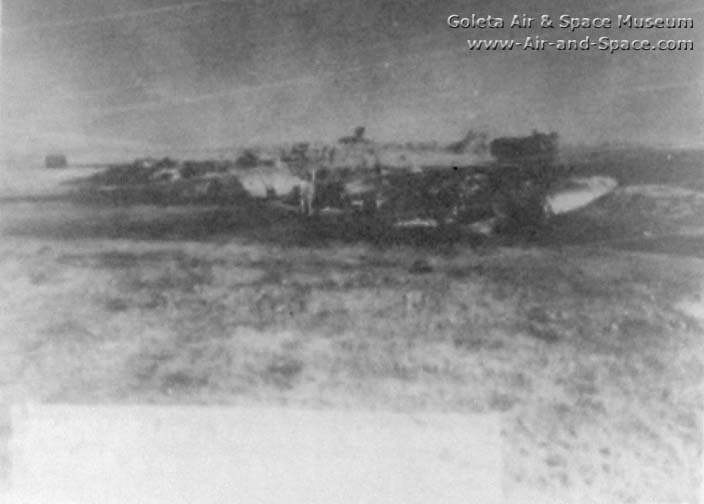
Crash of a Convair B-36B-1-CF Peacemaker at Fairchild AFB: 7 killed
Date & Time:
Mar 29, 1954
Registration:
44-92032
Survivors:
Yes
Schedule:
Fairchild - Fairchild
MSN:
29
YOM:
1946
Crew on board:
10
Crew fatalities:
Pax on board:
0
Pax fatalities:
Other fatalities:
Total fatalities:
7
Circumstances:
The crew was completing a local training mission at Fairchild AFB. During an aborted takeoff, the airplane crashed in unclear circumstances. Seven crew members were killed and three others were injured.

